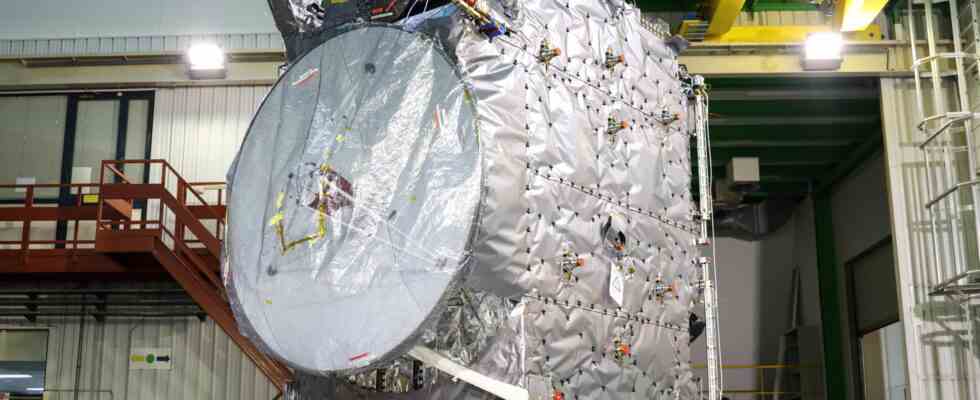Status: 01/23/2023 5:24 p.m
Exploring icy moons of Jupiter and examining “dark matter”: The European Space Agency ESA has big plans – but also some problems, as became clear at the annual press conference.
“Juice” and “Euklid” – these are the names of two of the most ambitious projects of the European Space Agency ESA for 2023. “Juice” is about exploring three moons of Jupiter: namely Ganymede, Callisto and Europa.
“They have a very thick layer of ice and a very deep layer of ocean. Ganymede probably has a rock core, but we don’t know that for sure yet. While Europa, on the other hand, probably has an ice core under the water. Those are assumptions that we have today – but we do still have to confirm,” said ESA Director General Josef Aschbacher at the annual press conference in Paris, adding: “It’s so exciting to find out how these icy moons are structured and whether they would have been habitable.” The launch of the “Juice” mission is scheduled for April.
Understand climate change better
The second project – “Euklid” – is a space telescope designed to explore so-called “dark matter” and “dark energy”. The telescope is scheduled to be launched from the US spaceport at Cape Canaveral at the beginning of the summer.
ESA’s earth observation program will also continue to play a central role in 2023: with a new generation of satellites, such as the “EarthCare” probe. The data collected in this way could ultimately help to make weather forecasts more precise – and not least to better understand climate change.
“We at ESA carry out missions. We build satellites and launch them into space – and we distribute the data to those who need it: to researchers who use it to create models. But also to the public, who can use it to find out whether the air polluted or not,” says Simonetta Cheli, Director of Earth Observation at ESA.
Problem: Launchers are missing
However, ESA’s ambitious projects continue to encounter a major problem: the crisis in the launcher sector. The last two flights of “Ariane 5” are scheduled to take off in 2023 – and ESA is having great difficulty launching a successor and getting its technology into space.
ESA Director General Josef Aschbacher cites three main reasons for the difficulties: “One is of course the war in Ukraine, as a result of which we lost access to the Russian “Soyuz” rockets. The other is the delay in “Ariane 6” and the renewed false start of “Vega C”. We have to come out of this crisis stronger.”
“Vega C” is a new transport rocket and the successor to the “Vega” rocket, which has been launching light satellites into space since 2012. Only last December, a flight of the “Vega C” failed.
One of ESA’s main goals is to make Europe more independent in terms of access to space. This goal is both an economic and a political one. One that the Franco-German Council of Ministers had emphasized again.
Between high ambitions and real problems: Annual PK of ESA
Carolin Dylla, ARD Paris, 23.1.2023 4:18 p.m

